Calivision is a web application designed to enhance your fitness experience. It offers advanced body pose estimation and action recognition, making it the perfect tool for tracking your workouts.
-
Body Pose Estimation: Analyze body poses in real-time using your webcam or uploaded videos.
-
Comprehensive Analysis: Compute essential features and visualize interactive plots for better workout insights.
-
Export Insights: Export computed features like joint coordinate time series, angle evolution time series or Fourier transforms for in-depth analysis and sharing.
-
Movement Classification: Categorize your movements into five labels:
BodyWeightSquatsJumpingJackLungesPullUpsPushUps
Here, you can select the pose estimation parameters as well as the input source. The two buttons enable you to start/stop the pose estimation, as well as process the data.
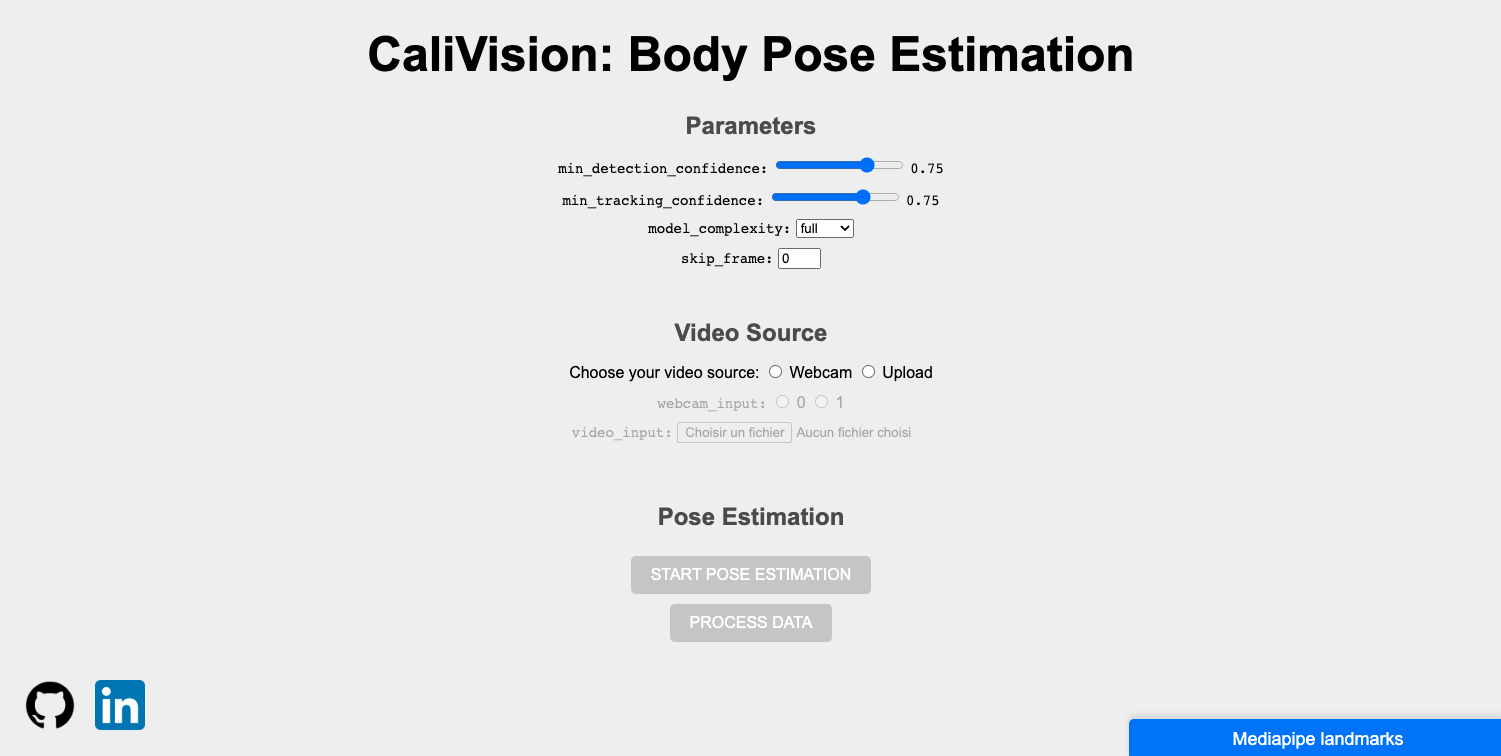
This is what shows when you start the pose estimation.
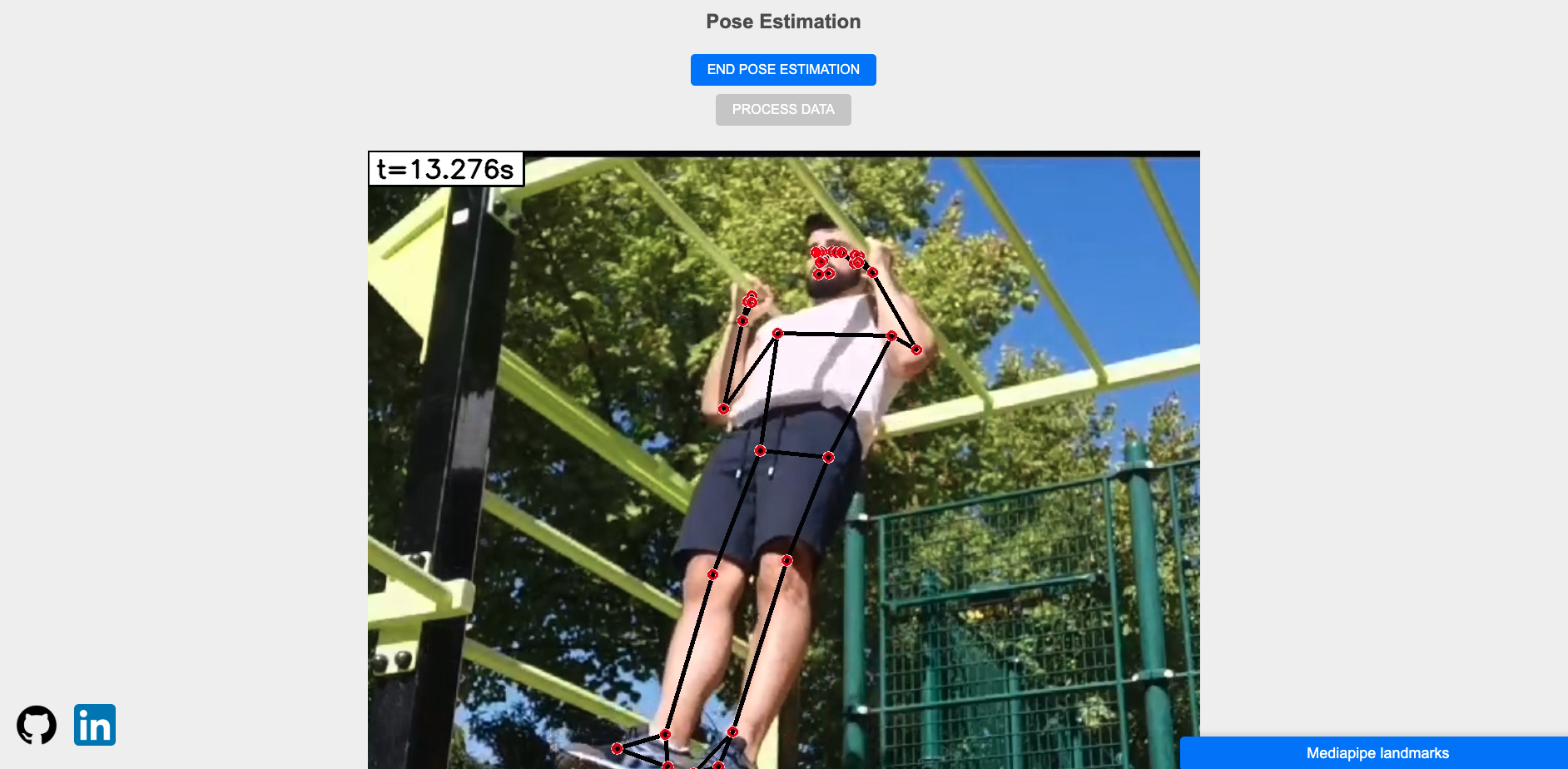
On this page, you have the choice between visualizing several plots, exporting the data, or perform action recognition.
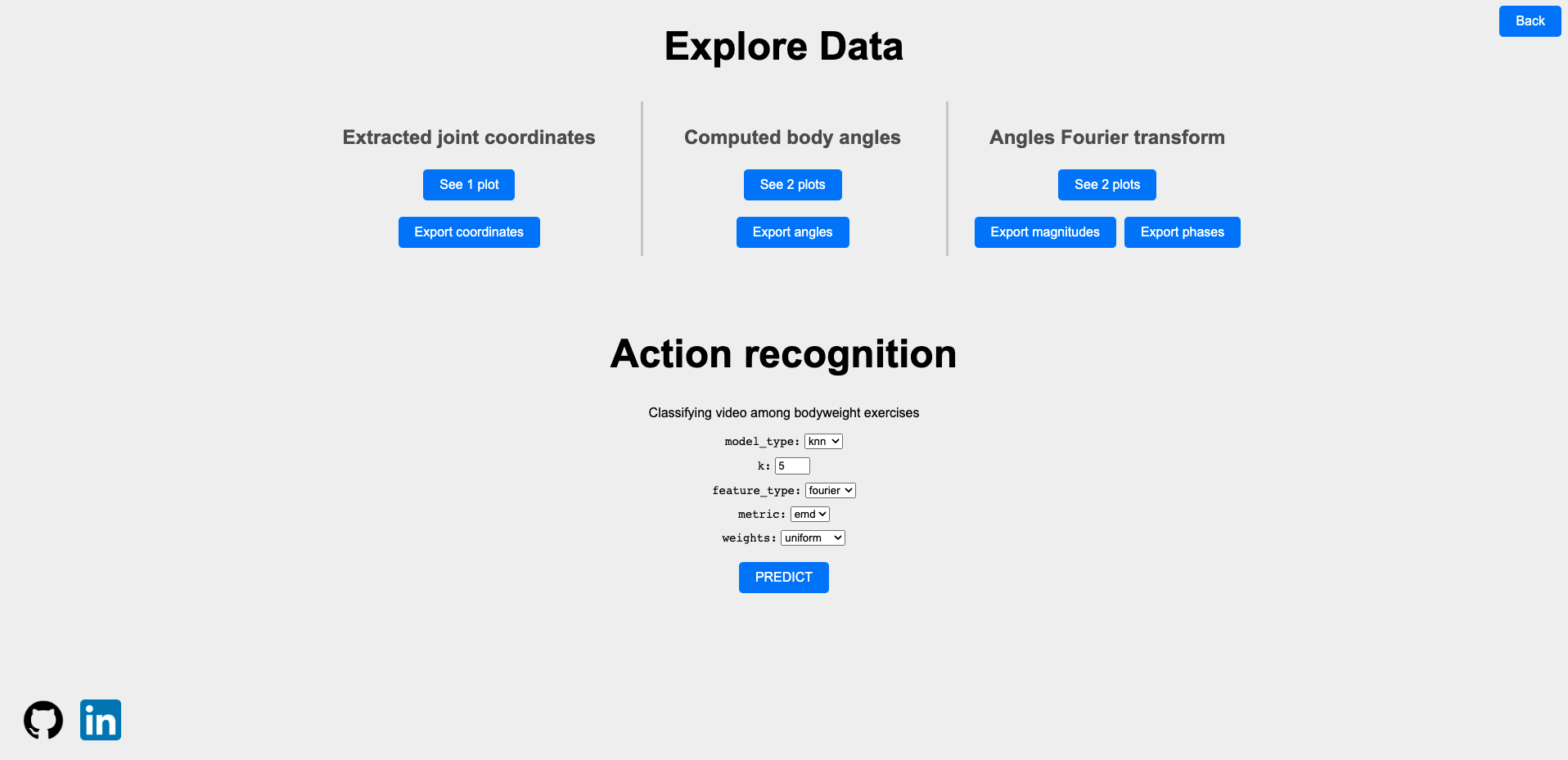
This is the interactive 4D plot : (x, y, z, t). Use the cursor to move through time.
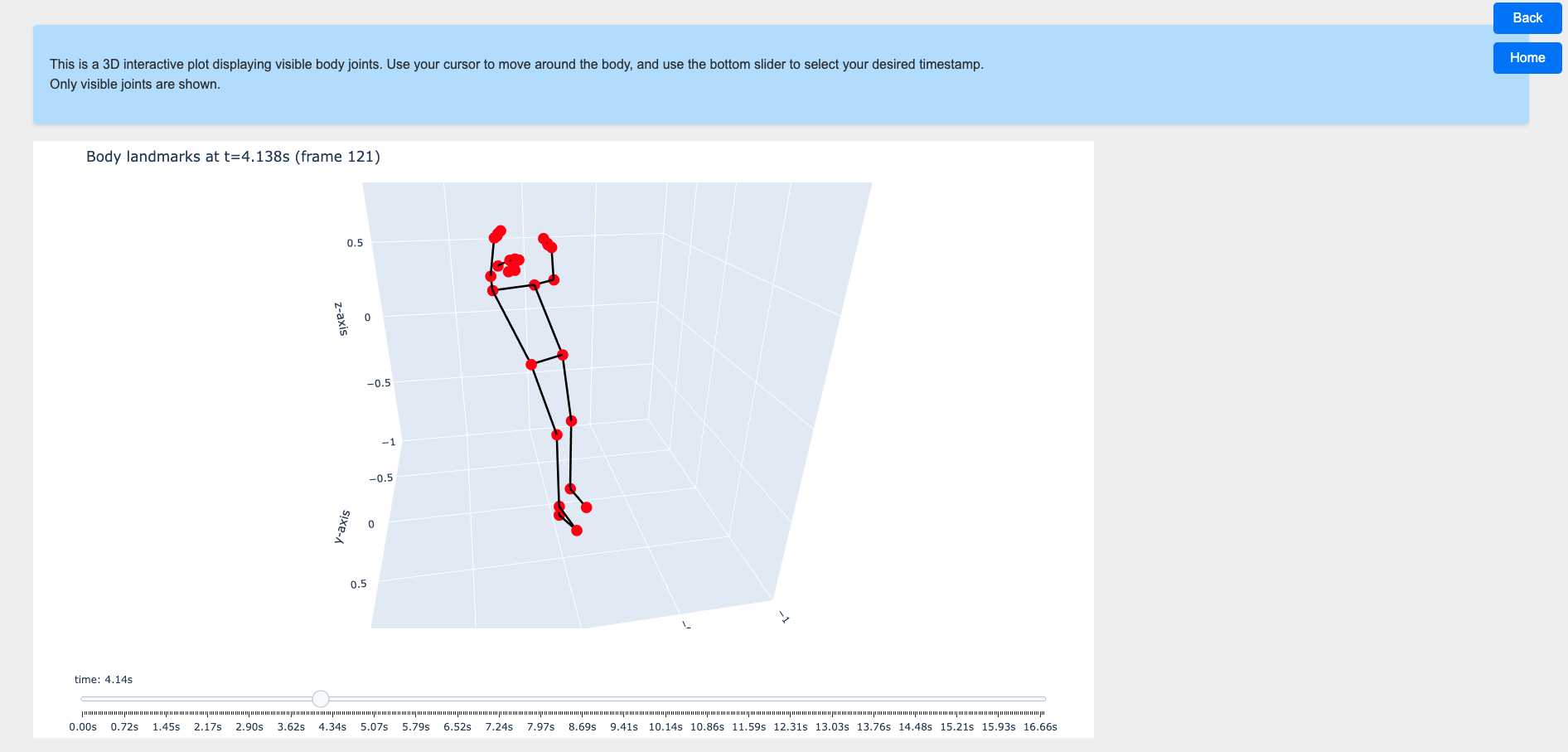
As for the angles, there are two different plots on the page.
The first plot is a multivariate time series visualization, showing angle values over time. You can choose to normalize each angle time series, using the interactive buttton.
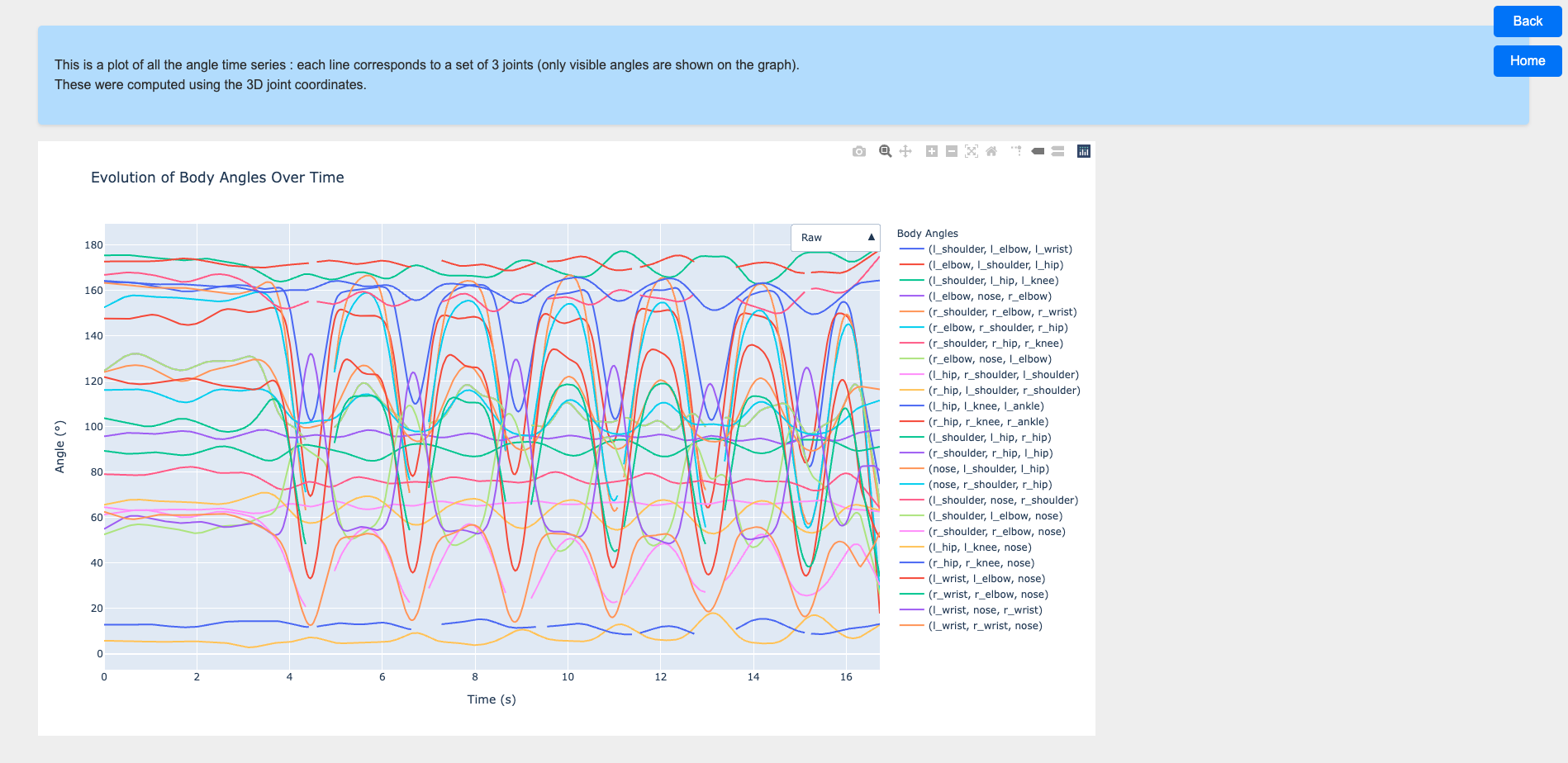
This second plot is a heatmap, which shows the same data as above but in another manner. You can choose to normalize the values horizontally, using the interactive buttton.
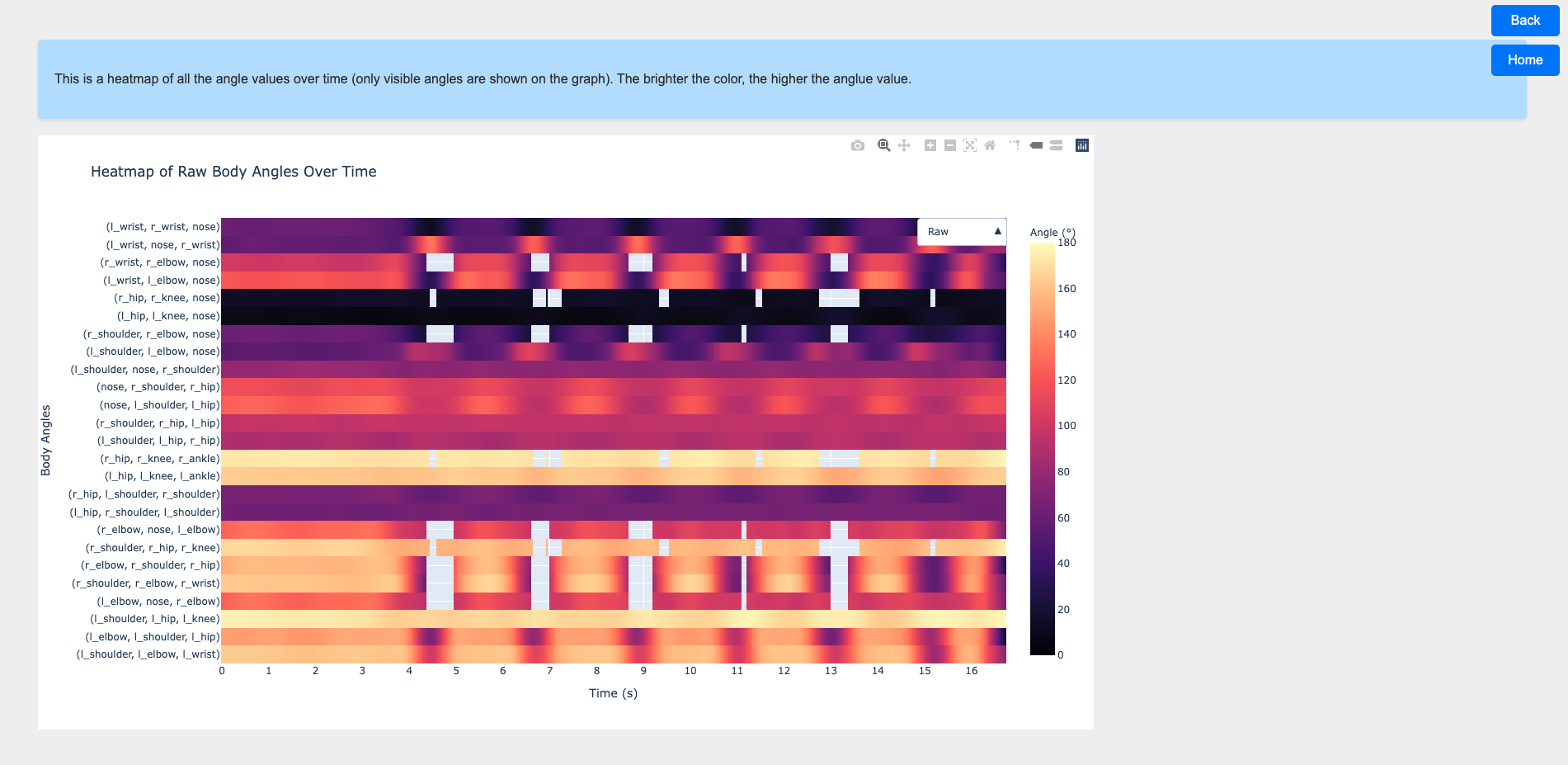
Once we have performed a FFT on the angle evolution data, we have access to the Fourier frequency spectrums.
This shows the magnitude for each frequency value, for each angle.
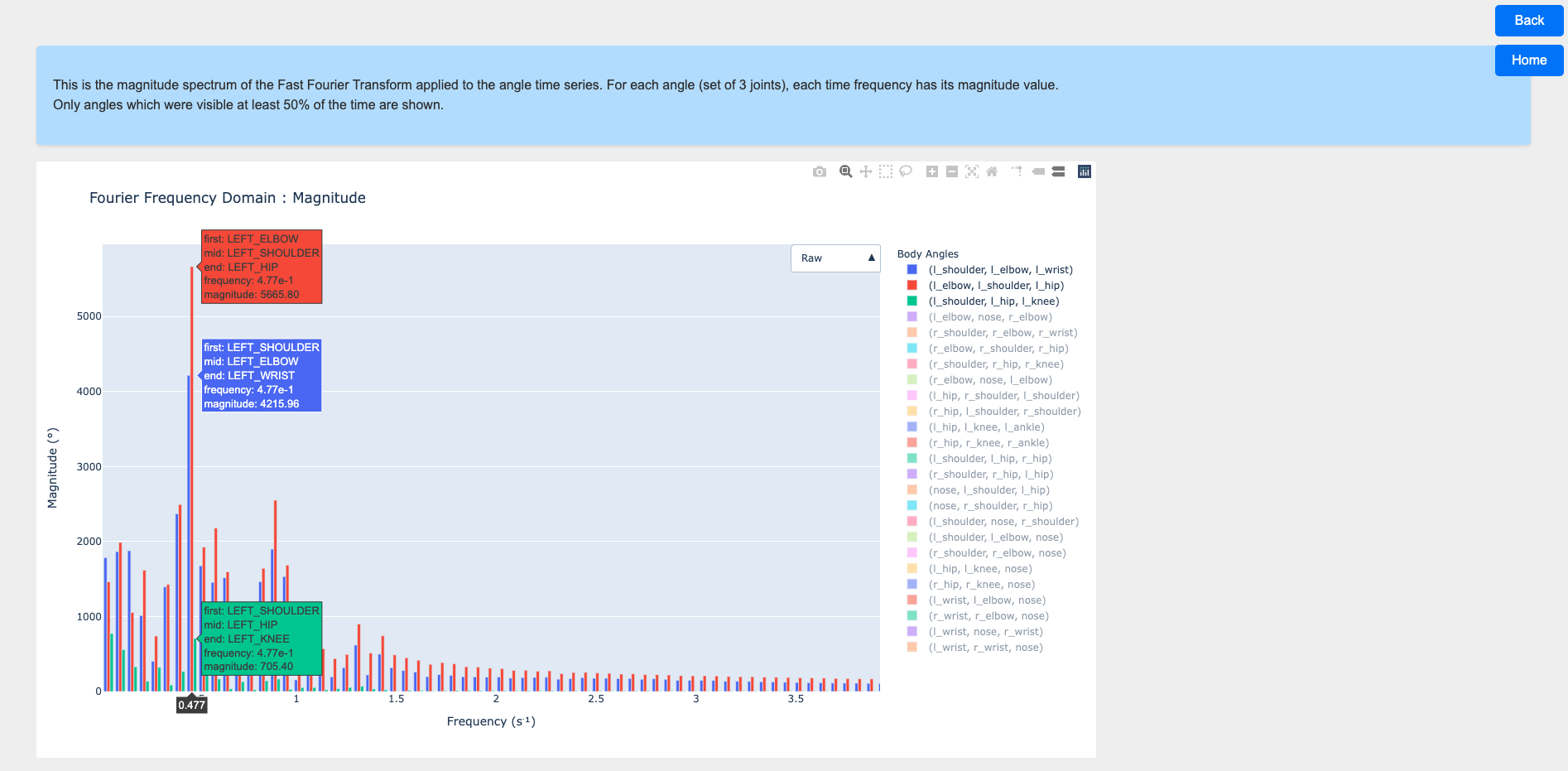
This shows the phase for each frequency value, for each angle.
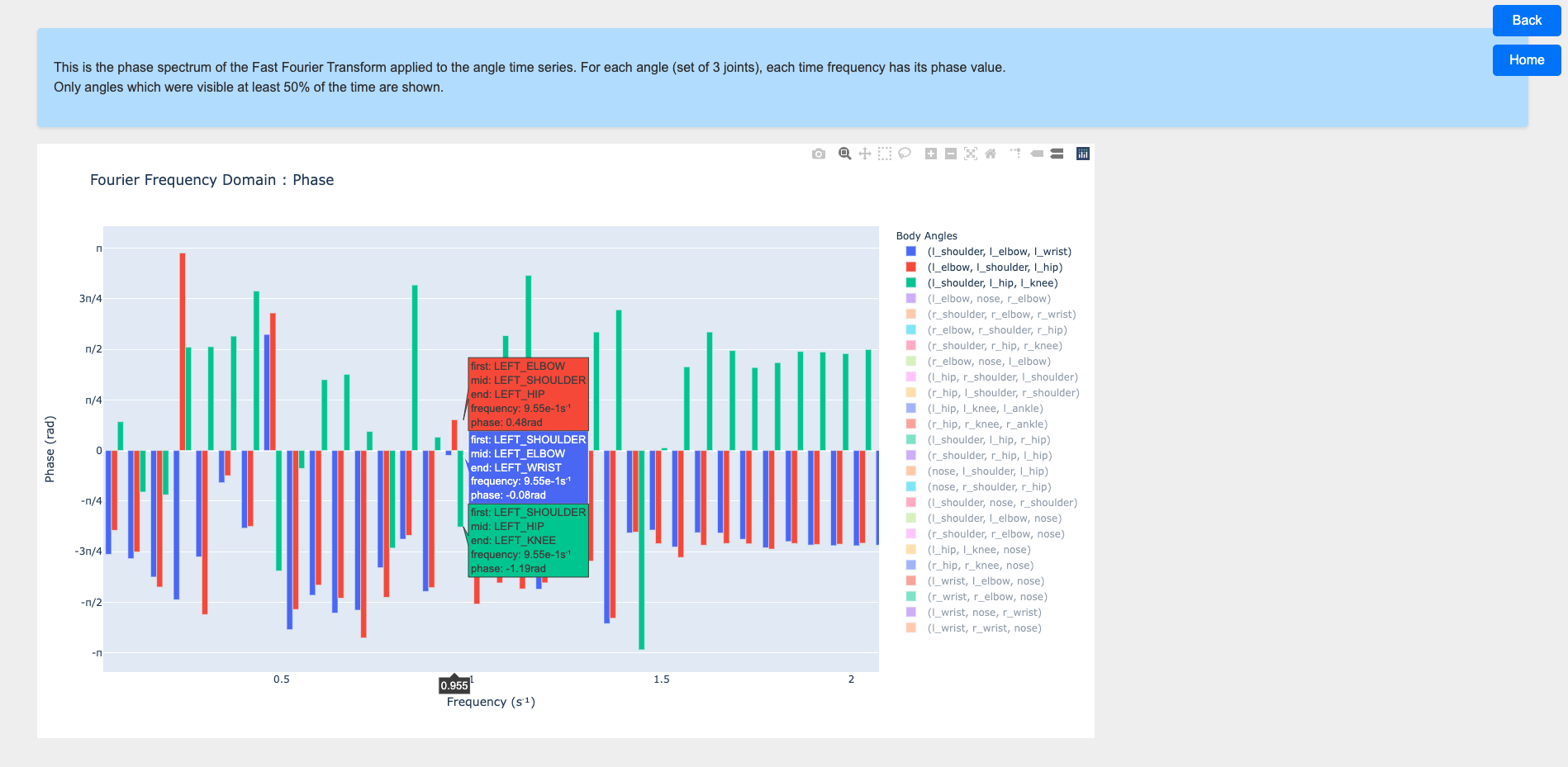
This is the page you land on after clicking on the prediction button. The results depend on the model and parameters you chose.
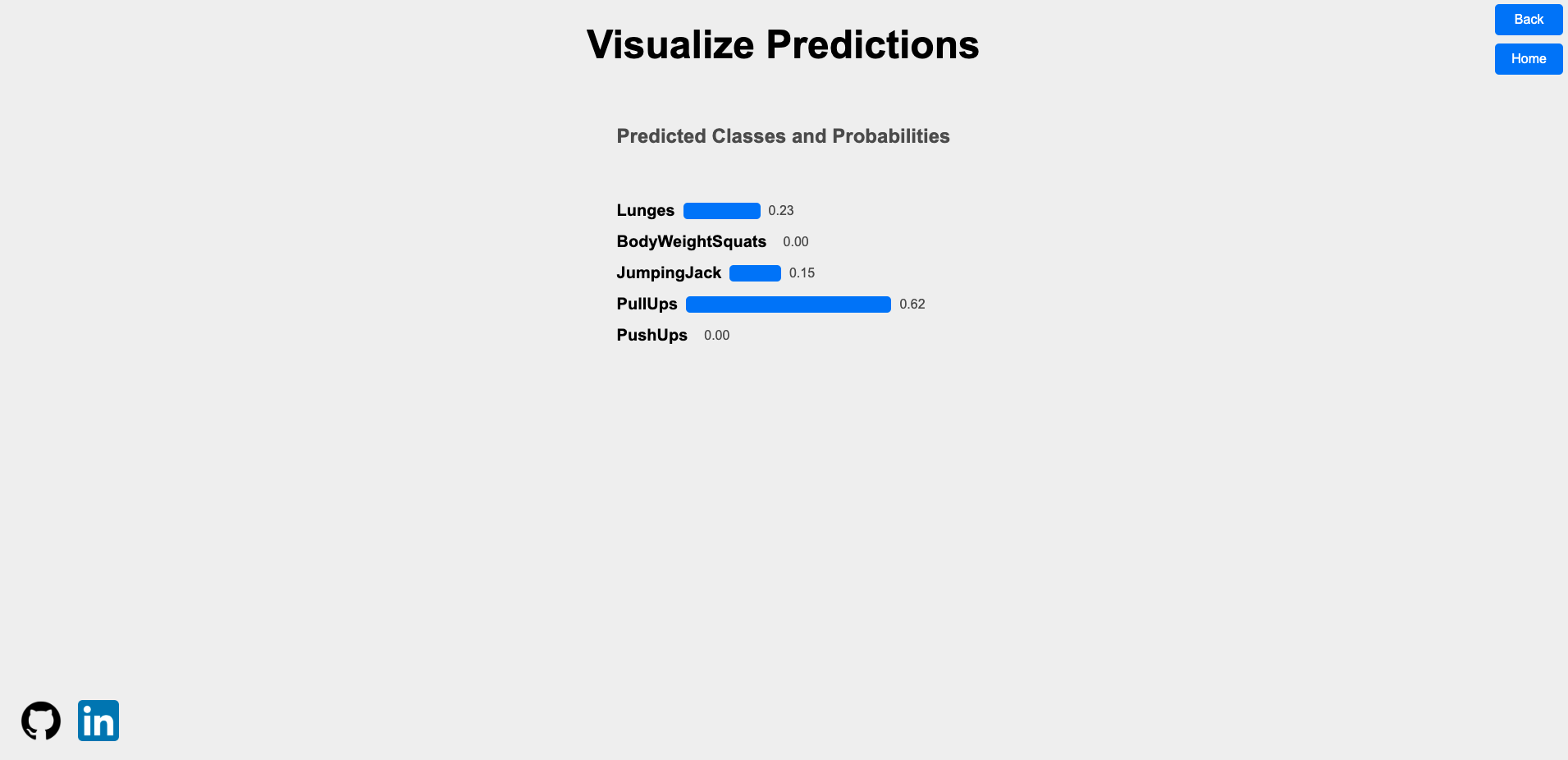
- Python >= 3.9
- Poetry (https://python-poetry.org/)
- (Optional) Install poetry:
pip install poetry- Clone this repository:
git clone https://github.com/daltunay/calivision.git- Navigate to the project directory:
cd calivision- Activate poetry shell and install dependencies:
poetry shell
poetry installTo run web app, do the following:
cd app
flask runThen go to localhost: http://127.0.0.1:5000/, and enjoy!
Calivision provides flexibility with various pose estimation parameters:
| Parameter | Description |
|---|---|
min_detection_confidence |
The minimum confidence score for the pose detection to be considered successful |
min_tracking_confidence |
The minimum confidence score for the pose tracking to be considered successful |
model_complexity |
Complexity of the pose landmark model. Landmark accuracy as well as inference latency generally go up with the model complexity |
skip_frame |
Number of frames to skip between two consecutive processed frames. Higher value means less processing time |
Choose from different methods for action recognition:
see /src/models/
| Model | Description |
|---|---|
lstm |
Long Short-Term Memory: PyTorch |
knn |
k-Nearest Neighbors: custom implementation |
see /src/features/
| Input Type | Description |
|---|---|
joints |
Input based on joint position coordinates (x, y, z) over time |
angles |
Input based on body angles (see /src/features/joints_data.yaml for the list) over time |
fourier |
Input based on Fourier spectral domains (magnitude and phase) |
| Metric | Description |
|---|---|
l1 |
Manhattan distance |
l2 |
Euclidean distance |
dtw |
Dynamic Time Warping |
lcss |
Longest Common Subsequence |
emd |
Earth Mover's Distance |